Wild marjoram (also known as oregano) is a wonderfully fragrant and versatile edible herb that you can easily grow in your garden, in a pot or on a window sill. Not only does it taste and smell great it’s also a fantastic plant to grow for pollinators like bees, beetles, butterflies and hoverflies, thanks to the abundant, nectar rich flowers it produces. It also provides an important source of food for birds in the autumn with a bounty of tiny seeds.
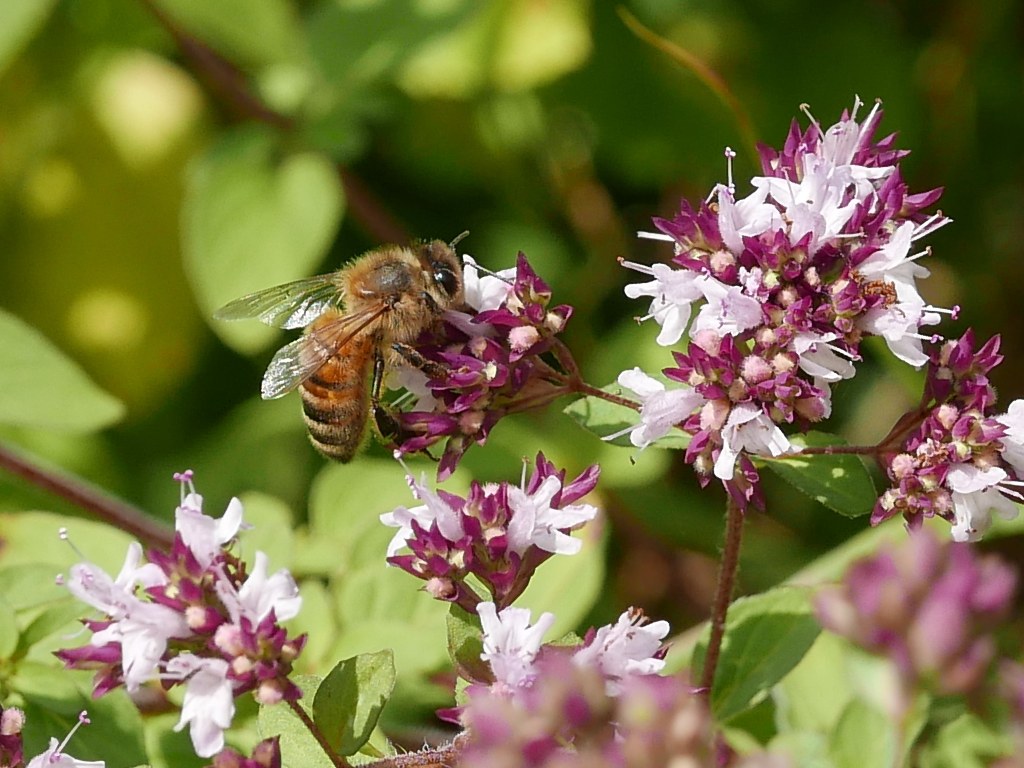
The Large blue butterfly also uses wild marjoram (along with wild thyme) as an egg laying space, they lay their eggs on wild marjoram plants so their caterpillars can feed on the flowers. Once the caterpillars have eaten and grown enough they fall to the ground where they start emitting a chemical scent to attract red ants. The red ants then carry the caterpillars back to their nest. Once safely in the nest the caterpillars start to feed on the red ants larvae (white legless grubs). They then pupate underground, transforming into and emerging as butterflies which crawl out of the nest to fly, feed, mate and start the cycle all over again

Wild marjoram is part of the mint family. There are actually over 7000 species of plant in the mint family which includes includes lavender, rosemary. oregano, basil, thyme, sage and lemon balm. Both the leaves and flowers of wild marjoram are edible and they can be eaten fresh or dried and used as a wonderfully aromatic herb to flavour savoury dishes like pizzas, pastas, soups, stews, sauces, meat and fish. Wild marjoram is a good source of vitamin A, Vitamin, Vitamin K calcium, iron, copper and manganese.
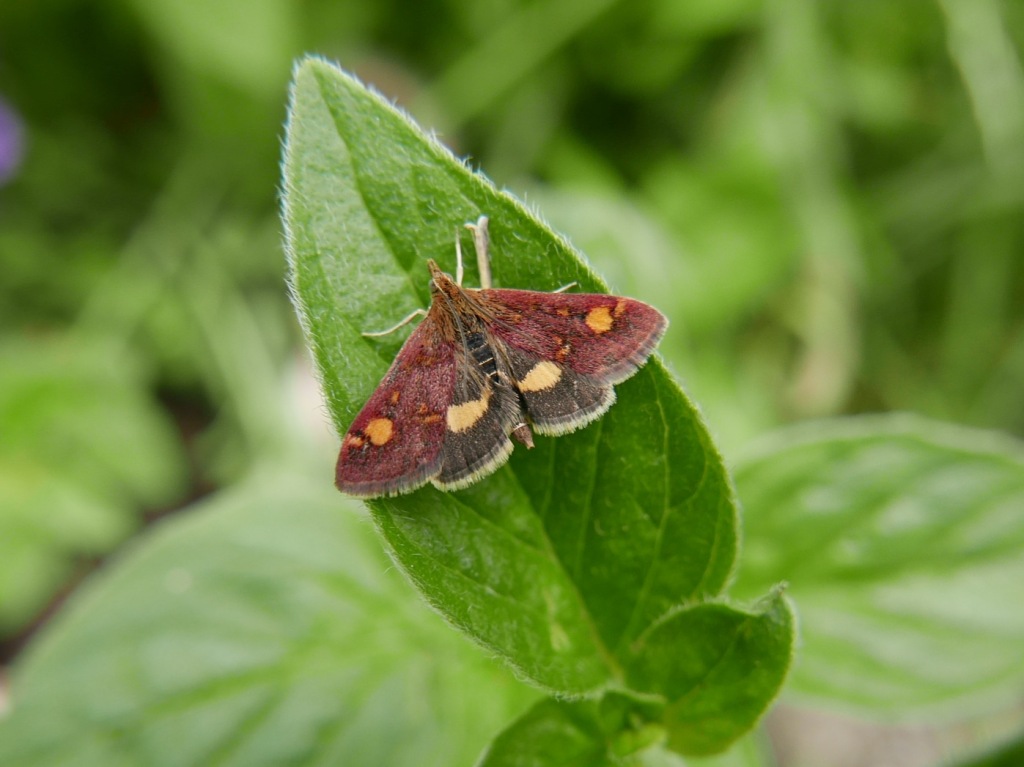
Throughout history wild marjoram has been used for both food and medicinal purposes, with the Greeks and Romans believing it symbolised love and happiness. Wild marjoram actually contains phenol caracrol which has been proven to have antibacterial antifungal and antimicrobial properties, so it was actually a pretty good plant to use to treat wounds before modern medicine.
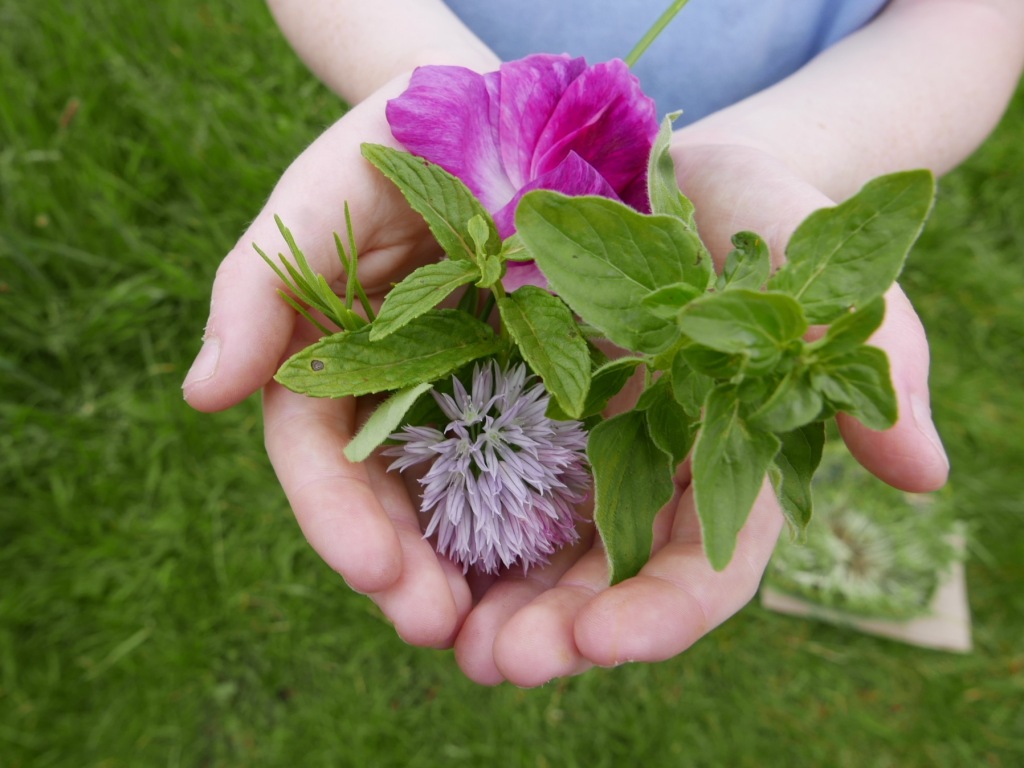
You can find lots of fun and simple marjoram activity ideas and recipes below to enjoy.
1. Go on a wildlife safari amongst wild marjoram
You might be surprised at the amount of wildlife you can find amongst marjoram plants. If you look along the stems and under leaves you can often find eggs, larvae, caterpillars and other insects and mini beasts such as aphids, snails and slugs. Pollinating insects like bees, beetles, butterflies and moths will also be attracted to the nectar rich marjoram flowers. You could look amongst marjoram plants in the garden or go out and find wild marjoram plants. You could also take a notepad or camera with you to record your finds and help citizen science by recording any insects you spot on the I spot nature site.

2. Make sensory exploration pots
Scented herbs like marjoram along with edible flowers, spices and fruits are great for sensory exploration and play. You can easily fill some recycled pots or containers with a variety of differently scented materials. Then the children can have fun guessing what is in each pot by smelling and shaking them whilst the lids are on. Or by opening them to touch, taste and explore the what is inside. Here are some ideas of sensory materials you could use:
- Edible flowers: Roses, Dandelions, Elderflower, Marigolds, Nasturtiums, Borage, Pansy’s or Primroses.
- Scented herbs: Lavender, Basil, Rosemary, Marjoram, Sage, Thyme, Oregano, Parsley and Chives.
- Spices: Cumin, Cinnamon, Paprika, Vanilla, Turmeric, Ginger, Cardamom, Anise, Clove and Liquorice.
- Fruits: Orange, lemon, lime, apple, grapefruit, strawberries and banana.
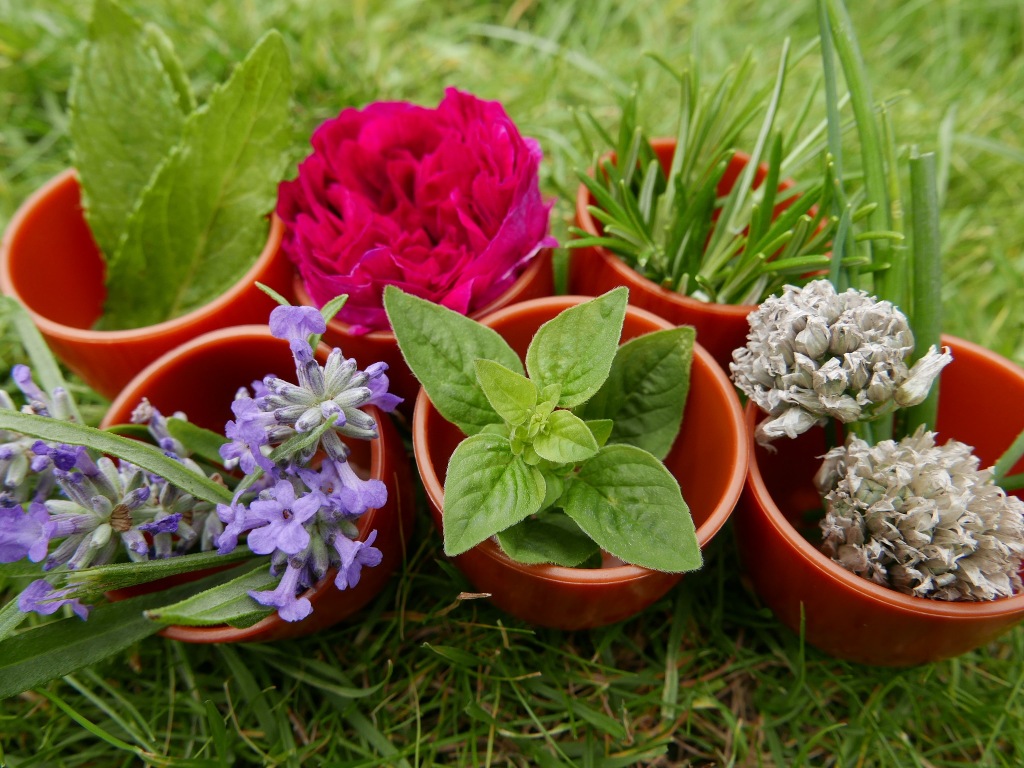
3. Marjoram short bread biscuits
Ingredients.
- 120 g of Butter
- 60g of caster sugar
- 180g of plain Flour
- A teaspoon of fresh picked, washed and finely chopped marjoram leaves
Firstly heat the oven to 180c

Cream the butter and sugar together before carefully add in the flour and finely chopped marjoram leaves, then mix until you have a smooth mix you can roll into a ball. Chill the dough in the fridge for 30 minutes. Roll the dough out to biscuit thickness and then use cookie cutters to cut out the biscuits. Place the biscuits on a tray covered in greaseproof paper, then pop them into the oven for 15 minutes (or until golden brown). The biscuits should keep an air tight container for 5 days or you can freeze them and save them to enjoy at a later date.
4. Sensory marjoram water play
Water play is a great sensory activity for children of all ages. Marjoram leaves and flowers scattered in the water help to add extra scent, colour and texture for the children to enjoy and explore. The leaves and flowers are both edible so it is also taste safe for younger children that like to taste and explore things with their mouths. *Just please be aware of the health and safety and risks with babies and don’t leave children unattended around water.
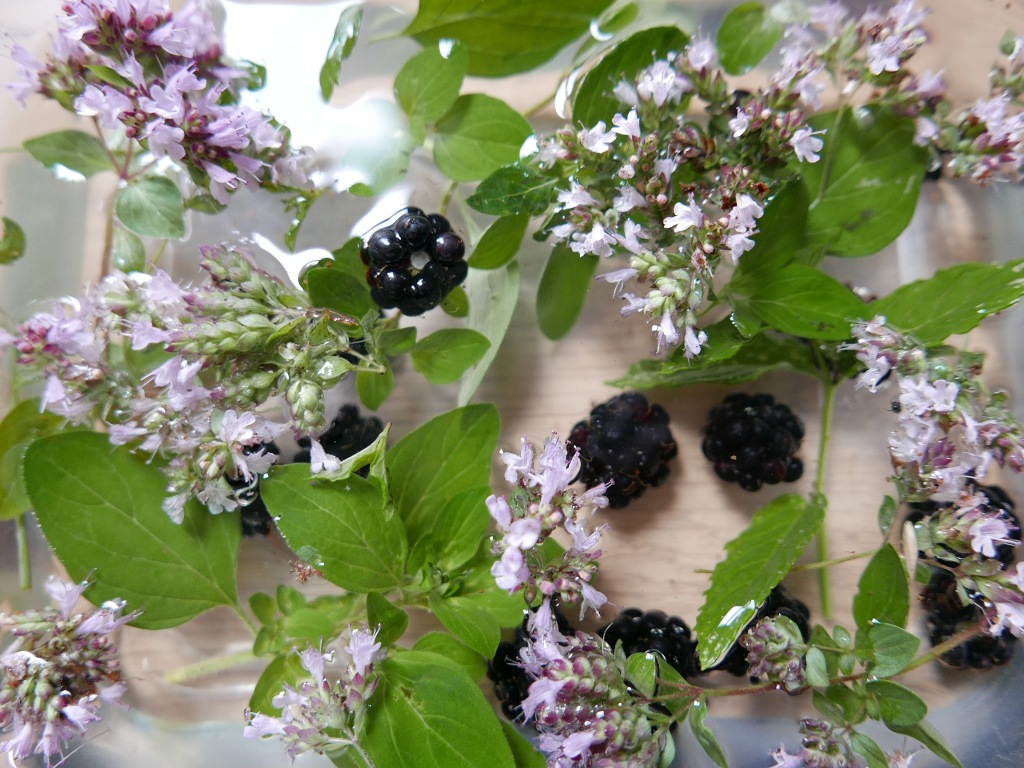
5. Sensory marjoram ice play
After you finish you can recycle the water and materials by pouring them into different shaped containers or ice cube trays to freeze and replay with as ice blocks another day. It’s fascinating to see the objects trapped in the ice. You can hold the ice up to the light or experiment melting or breaking the ice in different ways You could also incorporate them into water play or use them in pretend play with mud kitchens. The children will enjoy exploring all the different scents and textures as the ice melts.
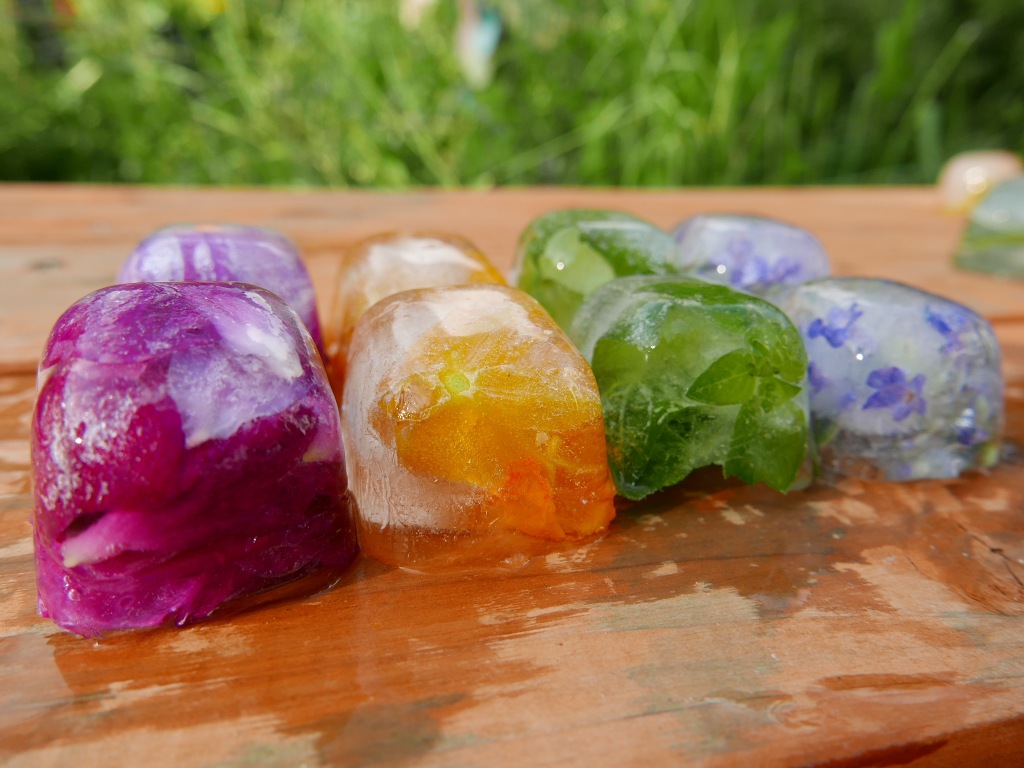
6. Marjoram scented playdough
It is surprisingly quick and simple to make your own homemade playdough using just kitchen cupboard ingredients. You can also easily add extra sensory elements with natural materials like scented herbs like marjoram, mint and lavender or use dried or fresh flower petals. You could also pop in a few drops of food colouring or flavourings to give the playdough a bit more scent or colour.
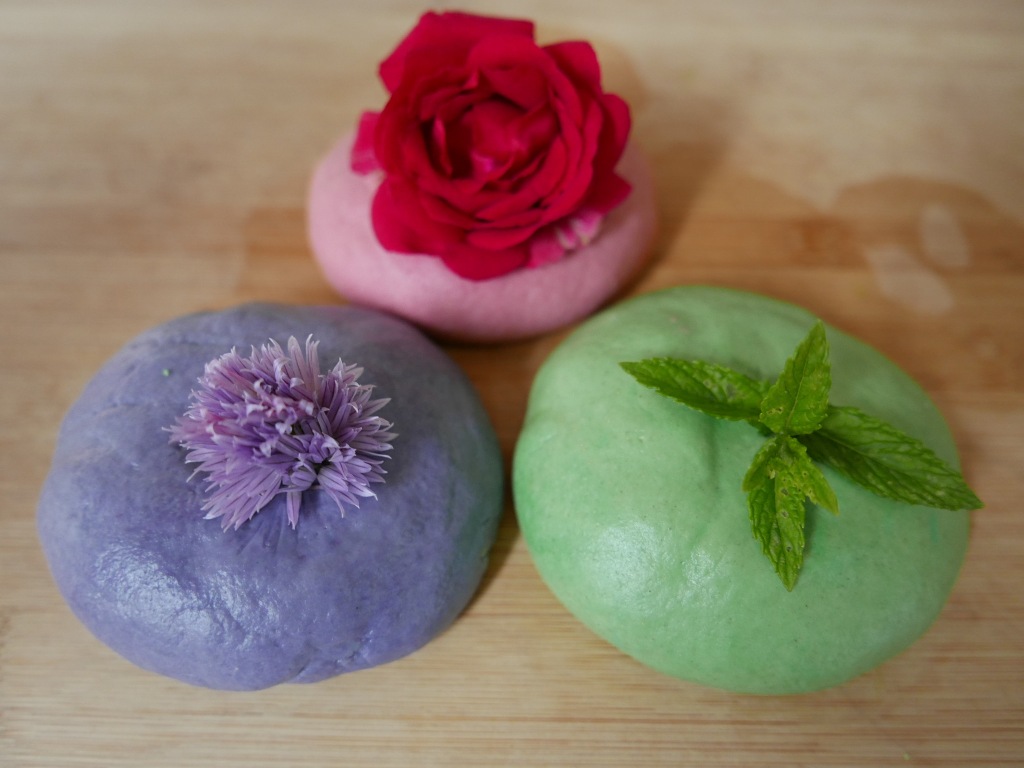
To make your playdough base you will need the following ingredients.
- 300g of plain flour
- 80g salt
- 2 tablespoons of cream of tartar
- 2 tablespoons of vegetable oil
- 240ml of hot water
First mix the flour, salt and cream of tartar together than add in the oil and any other additional natural materials. Next start to pour the water in slowly (you might not need it all) and if you are using food colouring or flavouring you can add a few drops now.
If the playdough feels to wet then add in more flour it it feels to dry add in a few more drops of water. Finally knead your playdough until its a smooth consistent dough. Once it feels right then it’s ready to use. Children can add additional natural materials to the dough as they play and have fun exploring and experimenting with mark making as well. Just remember that salt is toxic to plants and wildlife so do not leave playdough outside unattended or let it come into contact with grass or plants outdoors. We always play with ours on a tray or board.
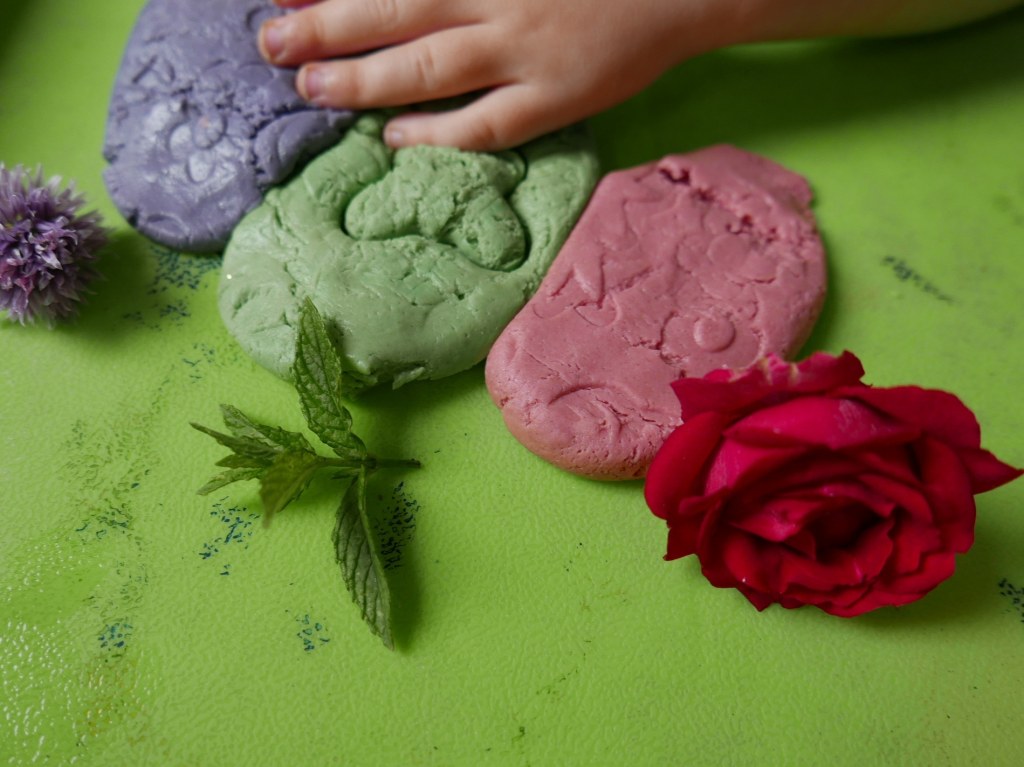
Your playdough should keep for awhile in an airtight container in a cool dry place although the length will vary depending on the natural materials you use and if the playdough gets wet or damp during play. Always check it carefully before play and give it a sniff to make sure it doesn’t smell off.
7. Cardboard tube marjoram flowers
To make cardboard tube wild marjoram flowers simply cut an old cardboard kitchen roll tube in half (or if you are using an old wrapping paper tube cut it into into quarters). Next you need to cut an even pattern of slits into one of the ends of the tube. Finally bend and fan out the strips to form the petals of your flowers. You can then dip your marjoram flower shapes into paint for printing onto paper or card. Or even just decorate and paint the tubes themselves to create pretty flowers for decorations.
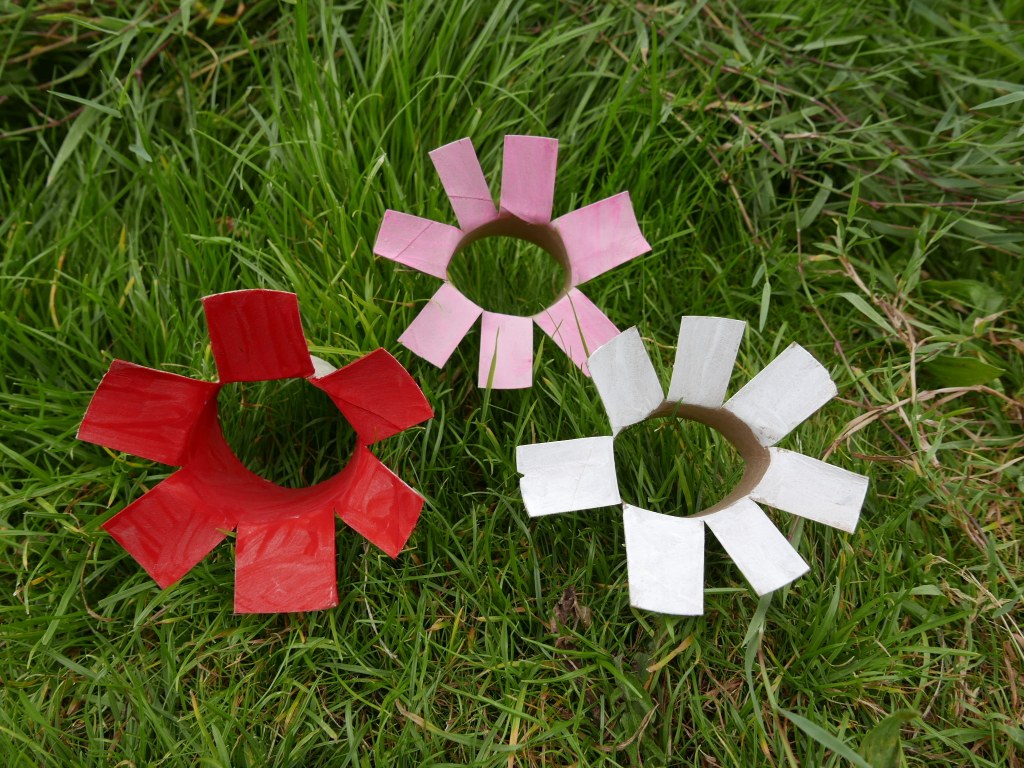
8. Marjoram nature painting
Nature painting is a simple activity for children of all ages, Just simply dip marjoram sprigs, leaves or flowers into paint and use them as natural paintbrushes or paint, print and mark make with. How about experimenting with other different natural materials to see what variety of marks you can make by using different shapes and textures. Recycled cardboard is a great environmentally material to use instead of paper for your nature painting. Simply cut out panels from old cardboard boxes and packaging.
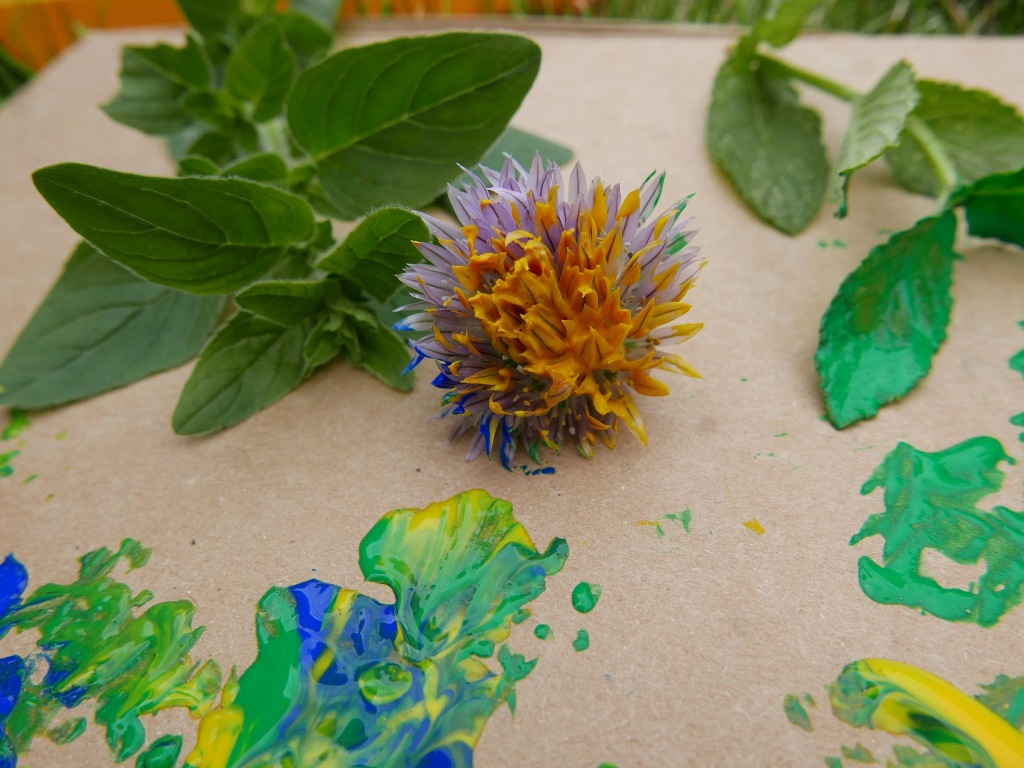
9. Tataki zome
Tataki zome is the Japanese art of transferring botanical dyes from flowers and leaves onto fabric by simply hammering them onto the surface. It’s also know as flower pounding, leaf bashing and sometimes refereed to as Hapa Zome. (Funnily enough Hapa Zome came from an artist getting the name wrong, now its more widely used than Tataki zome which is the correct name for it.)

For this activity you will need scraps of cotton or linen fabric or some old clothing. something to hammer with like a rounded stone, hammer or rolling pin, a safe surface to hammer on and finally natural botanical materials like herb such as marjoram, flowers, leaves and grass. *Pretty please however don’t pick any wild flowers, only collect flowers you have grown yourself, fallen ones you find on the floor or flowers from shop bought bouquets.

Lay the fabric or clothing flat onto a hammer safe surface and arrange your flowers and leaves on top. Then cover everything with a piece of paper or another piece of fabric. Carefully but firmly (supervision required at all times for this) hammer across the fabric with a stone or hammer. You should be able to see the dye seeping through the fabric so make sure you have hammered evenly across. Peel back the paper to see the images you have made.
For day 4 of 30 days wild 2024 we looked for edible plants and flowers in the garden, baked marjoram biscuits and sowed herb seeds.
If you like this you might like to try:
30 Rose activity ideas and recipes
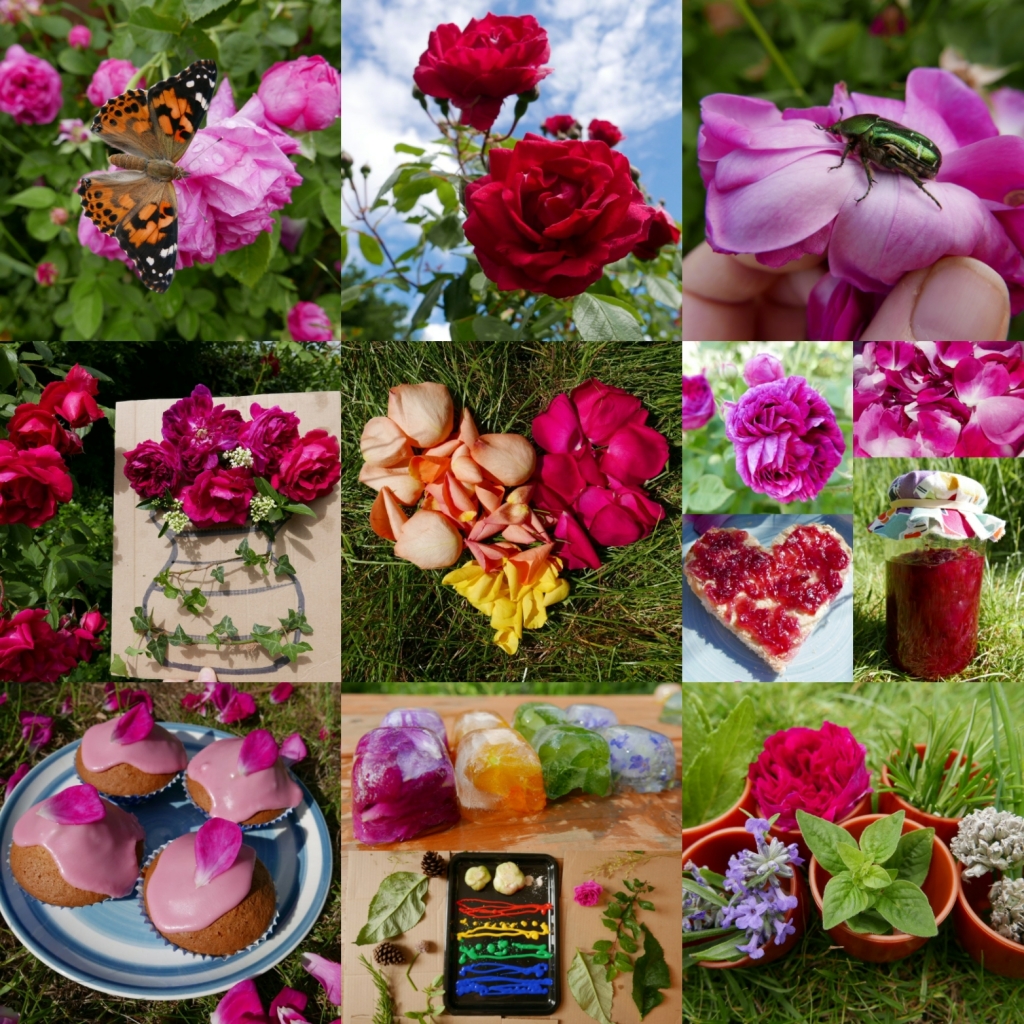
14 Lavender recipes and activity ideas

Mint activity ideas and recipes

